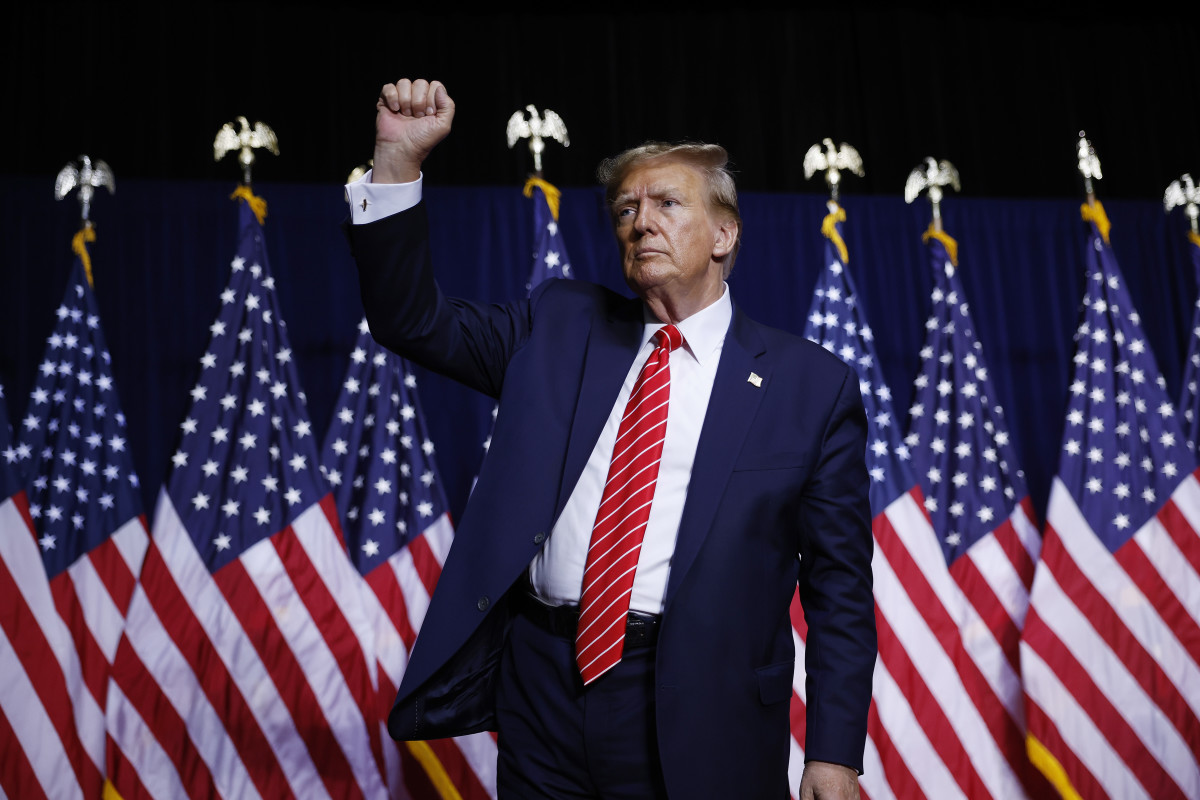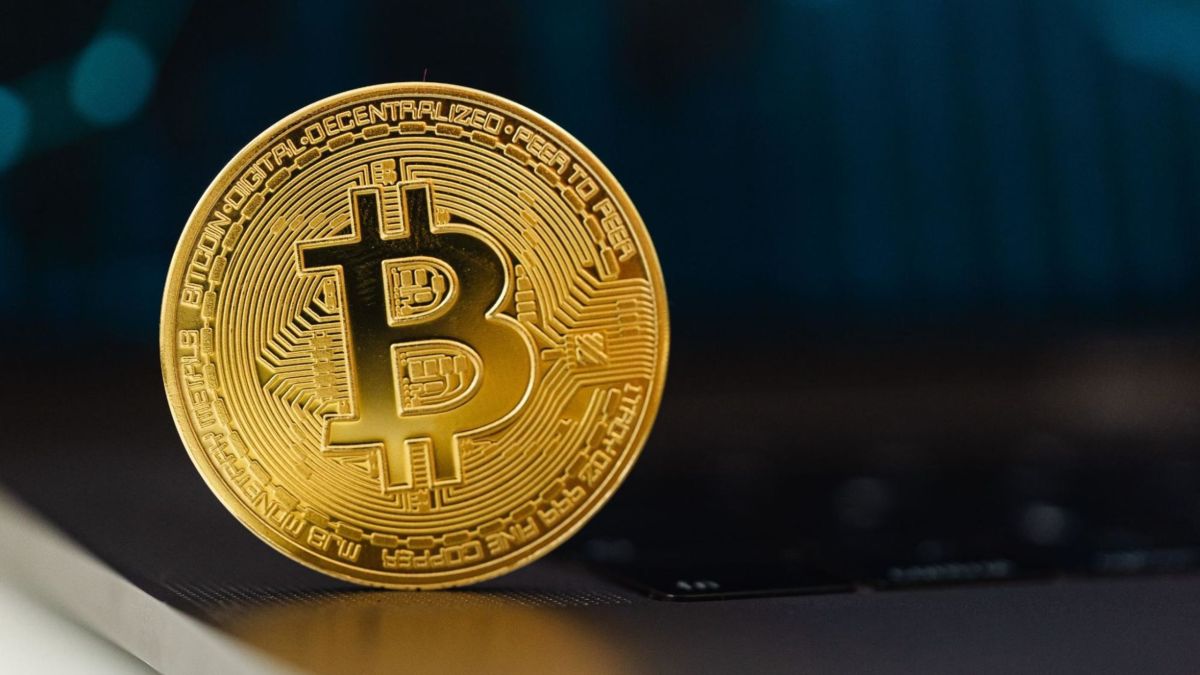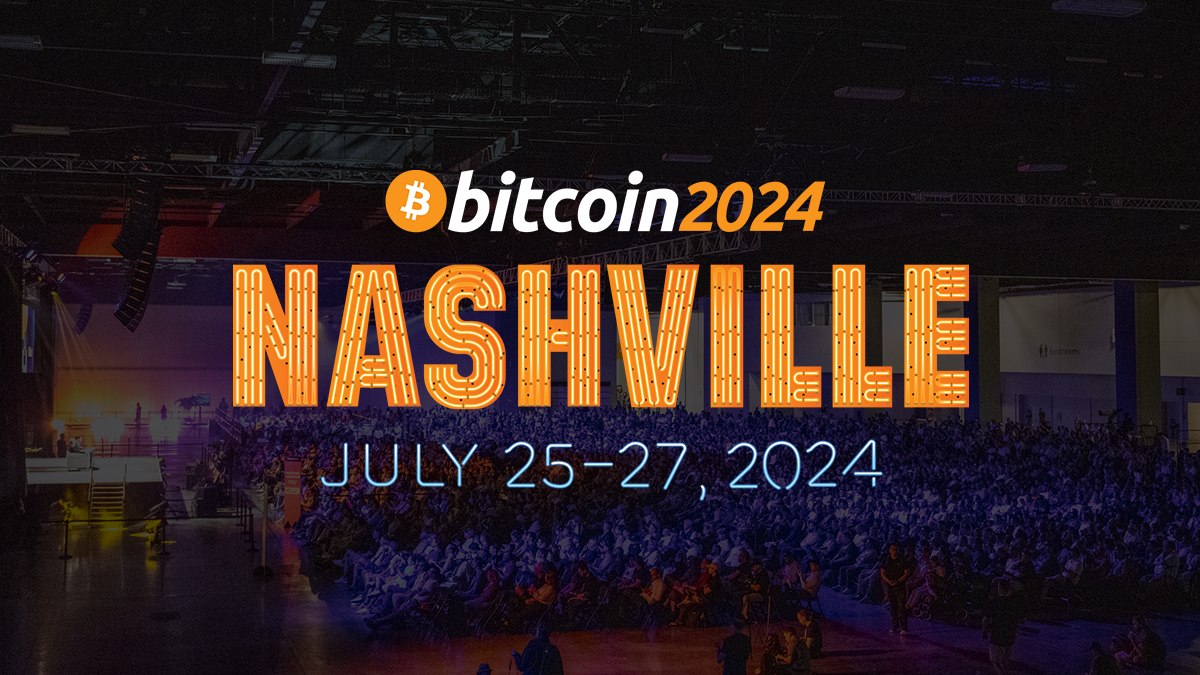Month: May 2024
This CEO Is Looking For The Next Generation Of Bitcoin Fund Managers
“I’m sorry, but there’s nothing more I can do to help you.”
Samara Asset Group (FRA: ECV) CEO Patrick Lowry had some choice words when it came to explaining just how much opportunity, and perhaps myopia, exists in the financial universe when it comes to Bitcoin.
In a recent Twitter Spaces, Lowry laid out his vision for a future financial system that utilizes the Bitcoin network at every level. From serving as a store of value à la “digital gold”, to being “the provenance of global financial commerce in trade, in money, and in capital markets”, opportunities abound.
Lowry believes that bitcoin may become “infinitely more valuable than anything Satoshi ever imagined and anything the Bitcoin community is thinking about.” Despite that, capital allocators, in his view, are somehow missing the boat, likening them to horses being led to water. For the Samara CEO, that’s all the better for those willing to take the plunge.
The MicroStrategy Copycats Are Coming
Having made a career in Bitcoin in digital assets, first at Deutsche Digital Assets followed by Cryptology (which went on to become Smara Asset Group), Lowry expressed a point of view that Bitcoin specifically is primed for a renaissance.
Primarily, he believes that MicroStrategy was just the first in a long line of copycats to come, and he likened his Malta-based Samara Asset Group as one such firm. “At [Samara], we have been acquiring as much bitcoin as humanly possible over the last couple of years.” For firms that want to follow suit, he believes recent fair value accounting rule changes by the FASB are more impactful than most in the market give them credit for, saying “I genuinely believe that the FASB’s ruling is more monumental, more forward for bitcoin, than the bitcoin ETF was.”
Joining the conversation, Dylan LeClair Bitcoin Magazine Institutional Lead and Director of Bitcoin Strategy at Metaplanet (TYO: 3350), echoed a similar perspective. LeClair and Japan-based Metaplanet have broken ground as the first equity to serve as a bitcoin proxy in Japanese markets, offering investors a means of receiving bitcoin exposure despite what he described as an unfavorable legal and taxation environment for holding bitcoin itself.
LeClair believes Metaplanet and MicroStrategy will not be the only ones to employ a bitcoin strategy, but that those who are earliest will benefit most: “It’s the people and institutions at the fringe that have deep conviction that are the first movers. And I think that’s where the advantage is.”
LeClair praised companies like Jack Dorsey’s Block for their recent announcement in which they revealed plans to invest 10% of the company’s gross profits into bitcoin. Soon after, the Block CEO went on to predict a bitcoin price of “at least $1 million” by the end of the decade.
The Alpha Is Up For Grabs
For Lowry, it’s not just the fact that bitcoin may increase in value, but that many of the firms who were in position to capture that appreciation were absolutely decimated in the bear market of 2022 and 2023. “There was a complete washout of the marketplace. It might be higher than 90%, it might be 95% of crypto managers got wiped out.” In other words, the playing field is wide open thanks to the GBTC arbitrage fiasco that brought the crypto house of cards crashing down.
Samara Alpha Management, a United States-based subsidiary of Samara Asset Group, is working to fill that gap in the market through the Bitcoin Alpha Competition in partnership with Bitcoin Magazine Pro. As part of Pitch Day at Bitcoin 2024 in Nashville, the competition seeks to award $1 million in seed capital to emerging bitcoin fund managers while also giving them the infrastructure necessary to get their fund off the ground.
Click HERE to apply for the Bitcoin Alpha Competition powered by Samara Alpha Management for a chance to win $1mm USD in seed funding. Applications close 6/7/2024
For the inaugural Bitcoin Alpha Competition in 2023, Animus Technologies Inc. was selected for their strategy leveraging artificial intelligence to analyze and capitalize upon changes in market sentiment. Animus CEO Maximilian Pace noted that the seed capital and Samara’s operational infrastructure enabled his firm to “focus on what we’re best at, which is signal formation and creating value through research.”
Lowry sees the globally distributed hivemind of talented digital asset traders, such as Animus, as a largely untapped resource. “You have some of the brightest and most talented managers in crypto that are just managing just a couple of assets via SMAs or frankly via Twitter. These are groups, and these are individuals, that I would like to empower by giving them the opportunity to have their own fund.
But these individuals don’t want to spend a quarter of a million or half a million dollars to become their own asset manager… These groups don’t know how to manage risk, they don’t know how to manage auditors. They might not even know what jurisdiction they should be setting up their general partnership or LP in… That’s [why] we started the Bitcoin Alpha Competition last year… [and now] we are very much looking forward to seeing what managers come from the competition for Bitcoin Nashville in July.”
Click HERE to apply for the 2024 Bitcoin Alpha Compeition as part of Pitch Day at Bitcoin 2024, Nashville
Dollar lower ahead of key inflation data Friday
Post Content
Is The MEV Monster Under Bitcoin’s Bed?
What’s MEV?
For the uninitiated, Maximal Extractable Value (MEV) involves various techniques used by market actors to capture additional value by exploiting price inefficiencies in blockchain transactions.
One naive form of MEV is called “transaction sniping.”
Most recently, manifestations of this phenomenon have begun populating your local Bitcoin memepools because of ordinals trading. Without going into too much detail, the way on-chain trading currently works is through the use of pre-signed Bitcoin transactions (PSBTs).
The concept is simple: some users list pictures on a marketplace by crafting a transaction with the details and the price they would like to sell it at. You, a cat aficionado, can purchase this feline grail by completing the transaction, adding to your address, the transaction fees, and your signature. The transaction is then broadcast and eventually gets settled on the Bitcoin network.
Easy, right?
Not so.
Turns out cats are a popular commodity these days and other fellow cat enjoyoooors are eyeing your prize. The open nature of the offers allows any of them to interfere with your purchase. This is because PSBT listings are auctions, not exclusive sales. Every transaction in the mempool associated with a cat is up for bid. Bitcoin’s 10-minute block interval opens up a window for cat opportunists to “snipe” each other’s transactions for the most valuable pieces. Nothing is settled until a transaction makes it into a block.
We learn from this that on-chain auctions are vulnerable to the settlement time of the blockchain they settle on. This creates an especially thorny problem for anyone with a little more ambition than trading cat pictures.
What’s causing MEV?
Now what’s the big deal with MEV? Surely everyone is not up in arms about a handful of degens outbidding each other for cat pictures?
Answering this question requires opening up an entirely new can of worms. This is going to be a bit of a trip in shitcoin land but bear with me, I promise it’s worth it.
You see, MEV is big business. To give a rough idea, MEV-Boost, the software responsible for coordinating the extraction of MEV on Ethereum has distributed, in less than 2 years, close to 500,000 ETH in rewards. That’s nearly 2 billion dollars!
What drives this entire market is, of course, trading. (read: degens)
On-chain AMMs (Automated Market Makers) use a popular concept called liquidity pools to allow users to trade assets without relying on centralized order books. Pools are typically composed of a pair of assets, like Ethereum and USDC.
When users want to trade one asset for another, they interact with these liquidity pools. Each trade adjusts the ratio of the two assets in the pool, affecting their relative prices. By removing centralized order books where a buyer needs to be matched with a seller for every trade, AMMs can be deployed as a decentralized on-chain contract.
Once a trading pair is created, any user can trade against the pool or contribute liquidity to it. Contributing liquidity involves supplying one or both assets to the pool, ensuring it maintains the appropriate ratio. Any imbalance creates an opportunity for market makers to engage in arbitrage by buying the cheaper asset from the pool and selling it at a higher price in other venues, such as centralized exchanges. This activity, along with the fees accrued by liquidity providers (LPs) from trading activity, incentivizes people to keep these markets liquid.
If you’ve heard of DeFi or Uniswap but never looked into them, this is the secret sauce. Liquidity pools can be deployed to trade any asset, and their permissionless nature has made them wildly popular. Upon closer inspection, we can observe that these trades are not fundamentally different from the cat market we discussed earlier — they’re just on-chain auctions.
As you might imagine, Ethereum’s architecture and its additional programmability create a particularly fertile environment for those auctions to be abused and manipulated.
Perhaps the most popular and intuitive one is front running. Remember that trades on AMMs are not instantly settled. In the same way that cat snipers can monitor the Bitcoin mempool for juicy deals, Ethereum also has an army of financial mercenaries diligently watching over every trade opportunity.
Except that the ETH boys aren’t playing with this stuff. It’s no Private Ryan, it’s SEAL Team Six over there. They employ several elaborate techniques to exploit the time gap between when a transaction is broadcast and when it is confirmed on the blockchain. As a result, front-runners can place their own transactions ahead of the original trade, profiting from the price changes their actions cause. This generally causes regular users to receive worse prices than expected. One of the worst manifestations of this is the practice of sandwiching users, where a buy order is placed just before a user’s trade and a sell order right after, capturing the price difference at the expense of the original trader.
While those dynamics have been controversial because of the effect they have on user experience, they only represent a portion of the MEV economy. The biggest source of MEV, by a rather large margin, comes from something commonly known as “Loss-Versus-Rebalancing.” Put simply, it is an adverse form of the pool arbitrage described above affecting liquidity providers.
When the price of the assets in the liquidity pool diverges from the price at which they were originally deposited, arbitrage traders step in to rebalance the pool to reflect the global market prices. This rebalancing process leaves liquidity providers vulnerable, as they’re unable to adjust to market volatility between blocks. Due to their exposure to outdated prices, they become an easy target for traders with access to centralized order books. These traders exploit the price discrepancies, often leaving liquidity providers with a less favorable asset mix and reduced overall value.
The situation is so dire that those were the conclusions of a recent research paper on the matter:
Our main result is that earnings from fees are smaller than losses to arbitrageurs in the majority of the largest Uniswap pools, currently holding hundreds of millions of USD. This result raises the question of why LPs nevertheless contribute their capital to these pools.
Other factors such as hedging have helped larger operations mitigate those issues but the extreme conditions described have likely resulted in the consolidation of liquidity provisioning into a smaller number of actors.
Why do we care about Ethereum?
Good question, anon! The reason I bring this up is because a lot of the recent conversation around MEV on Bitcoin completely misses the fact that those systems don’t exist in a technical vacuum. I understand that the new and unknown concepts can provoke skepticism but a lot of the dynamics involved are well understood by now. Strictly looking at it under a technical lens does us all a disservice.
We understand that different new proposals floating around to improve Bitcoin’s scripting capabilities may introduce more expressivity to the protocol. It’s not impossible that a combination of those features may allow someone to build the equivalent of an AMM on-chain. It’s clear something on the scale of Ethereum would have adverse effects on the decentralization of Bitcoin. We know that MEV tends to incentivize high levels of specialization at the mining level. If you want a better understanding of the risks at hand, Spiral developer Matt Corallo put together a decent primer on the topic.
Unfortunately, the most important aspect of this subject has remained more or less completely ignored by everyone at the table. MEV and every associated system are driven by economic incentives. Different parameters can have a significant impact on the viability of this activity.
Our story about cats illustrates how the interval between blocks plays a crucial role in the game theory of on-chain auctions. This theory is now supported by documented evidence. Researchers generally agree that longer block times exacerbate issues around MEV. This poses a significant challenge for anyone considering building AMM systems on the Bitcoin blockchain.
Is Bitcoin in danger?
Comparing Bitcoin’s 10-minute block interval to Ethereum’s 12 seconds, it’s fair to wonder whether or not the settlement times required by Proof-of-Work security are compatible at all large-scale on-chain auctions.
The prolonged interval between Bitcoin blocks means that liquidity providers (LPs) would be exposed to stale prices for extended periods, making it impractical, if not irresponsible, to commit substantial capital. This latency increases the risk of front-running and other forms of MEV exploitation. It’s an arbitrage dream!
Those observations suggest that on-chain trading on Bitcoin may not be viable even if it becomes technically possible. Applications targeting this use case are increasingly optimizing for speed and efficiency, leaving little room for Bitcoin to become a competitive option. Capital allocators are likely to shy away from the risk associated with this architecture, and users will simply prefer platforms better aligned with their interests.
This highlights the critical importance of economic considerations when evaluating the risks and rewards of technical changes to the Bitcoin protocol. Don’t get it twisted, the noise surrounding this conversation is driven by economic interests eager to replicate the financial flywheel of MEV on top of Bitcoin. Now that the attitude with regard to innovation at the protocol level has changed, they look at this situation as a billion-dollar opportunity to recycle proven business models.
What many fail to appreciate is that Bitcoin’s slow but steady settlement process acts as a natural deterrent to predatory MEV activities. This isn’t a comprehensive study and further evaluation is necessary to assess MEV risks on layers built atop the protocol. On the other hand, it’s a pretty compelling reason to believe that the fear of the MEV monster on Bitcoin may be grossly overestimated. The inherent delay in Bitcoin’s transaction finality offers a unique form of protection, making it less susceptible to the same level of MEV exploitation seen on faster chains like Ethereum.
Bitcoin Halving Post Mortem: Insights from Hashrate Index’s Q1-2024 Report
Introduction:
The latest Q1-2024 Hashrate Index Report by Luxor Technology delves into the Bitcoin mining sector’s performance after the Fourth Bitcoin Halving. This report offers critical insights into key metrics such as Bitcoin Hashrate, Hashprice, Hashrate Forwards, and Bitcoin Mining Stocks, highlighting the Bitcoin mining industry’s adaptability – and also the challenges that lie ahead for miners in a 3.125 BTC block subsidy world.
Bitcoin Hashprice and Hashrate Fluctuate
Now that the Fourth Halving has passed, Bitcoin miners have their eyes on two metrics in particular: hashprice and network hashrate.
Hashprice is a measure of how much revenue miners can earn per day when hashing with a full-pay-per-share mining pool. All else being equal then, we should expect the halving, which halves the Bitcoin block subsidy, to cut hashprice in half.
This didn’t happen immediately, though. Hashprice experienced extreme volatility in the run-up to and immediately after the Halving. In the hour that the Halving took place, hashprice dipped to $74/PH/Day, but it swiftly rose to a peak of $183/PH/day as transaction fees roared from Runes trading activity. The Runes hype was short-lived, and hashprice soon plunged to a record low of $44/PH/day before stabilizing at its current level of $50/PH/day. The prior all-time low for hashprice, $55/PH/day, occurred in 2022 during the fallout of the FTX debacle, and the new hashprice reality underscores the brutal economics miners now confront.
Which leads us to the next major metric that the Halving has impacted: Hashrate. Over Q1-2024, Bitcoin’s 7-day average hashrate increased 19% to 611 EH/s, and it would increase another 6% in April to an all-time high of 650 EH/s. With the dust settled after the Halving, Bitcoin’s hashrate has fallen 10% from its all-time high to 580 EH/s.
Given that mining margins are compressed and summer is upon us – which will likely necessitate power draw curtailment from industrial-scale mining farms in places like Texas, a headwind for hashrate growth – we should expect Bitcoin’s hashrate to experience only marginal growth this year.
Hashprice is Trading in Contango
Notably, traders in hashrate markets believe that the bottom is in for hashprice (for now, at least).
Luxor’s Hashrate Forwards, a Bitcoin mining derivative which allows miners and other participants to buy and sell hashrate for fixed prices at future dates, are trading in contango, which means that hashrate traders expect hashprice to be higher in the coming months than the current spot price. This suggests a bullish sentiment among Hashrate Forwards traders, who expect an increase in hashprice potentially due to higher transaction fees or a decrease in mining difficulty.
As we stated in the last section, it’s possible that curtailment in mining hotspots like Texas could cause hashrate to temporarily come offline, thus improving hashprice and mining margins.
ASIC Markets are Undergoing Price Discovery
The ASIC market experienced a significant slowdown as the Halving approached, with notable price drops across various models despite a higher average Hashprice in Q1-2024. Unsurprisingly, price premiums for the Antminer S21 compared to other models increased, indicating a strategic shift among Bitcoin miners towards more efficient hardware to mitigate the decline in post-Halving revenues.
Bitcoin Mining Stocks are in a Hashrate and Efficiency Arms Race
All major public Bitcoin miners increased their hashrate throughout 2023, yet certain miners have taken more aggressive steps to boost their hashrates in the early months of 2024. With the block subsidy now halved, it is imperative for miners to equip their ASIC fleets with the newest hardware to remain competitive in the hashrate arms race and lower their operating costs per unit of hashrate.
Predictions and Outlook for 2024 and Beyond
Barring a significant uptick in Bitcoin’s price and/or a transaction fee bullrun, 2024 will be a challenging year for Bitcoin miners. Now more than ever, transaction fees will have a critical role in a miner’s bottom line.
In terms of coping with the new normal, those who didn’t do so in 2023 will need to get creative with their operational strategies. Beyond optimizing their fleet’s power efficiency with the latest ASIC models and securing more favorable power contracts, they can employ after-market firmware to optimize their ASICs, adopt more sophisticated hedging strategies, and look for alternative revenue streams or places to cut operating costs.
In the US and Canadian context, we anticipate consolidation driven by mergers and acquisitions as companies take advantage of fire sale prices for ASICs and mining facilities. As the mining sector continues to mature, mining will become even more entrenched in and integrated with energy systems, and we believe that the current Halving epoch will accelerate this integration as miners are driven towards the source of electricity production to tap the lowest possible power costs.
This is a guest post by Alessandro Cecere & Colin Harper. Opinions expressed are entirely their own and do not necessarily reflect those of BTC Inc or Bitcoin Magazine.
JPMorgan notes easing dollar long positions in May
Post Content
Elon Musk Counsels Donald Trump on Crypto Policy to Reach New Voters: Bloomberg
Elon Musk and former President Donald Trump are in discussions about cryptocurrency policy as Trump increasingly highlights Bitcoin and other digital assets on the campaign trail, Bloomberg reported today. According to sources familiar with the talks, Trump sees Bitcoin and other cryptocurrencies as a way to appeal to new voters.
JUST IN: Elon Musk and Donald Trump are discussing crypto policy as Trump highlights #Bitcoin and other digital assets as a way to reach new voters — Bloomberg pic.twitter.com/1h3GQU7t0n
— Bitcoin Magazine (@BitcoinMagazine) May 30, 2024
The discussions with Musk follow Trump’s recent support of Bitcoin and the broader cryptocurrency ecosystem, emphasizing that innovation must happen in America. “Our country must be the leader in the field. There is no second place,” he stated.
Trump has also seen big support from Bitcoin and crypto industry leaders, attempting to raise millions in donations to support him and his new policies backing Bitcoin.
In addition, the conversations between Trump and Musk reportedly cover ways for Musk to take on a broad advisory role should Trump win a second term in November. The exact format of this potential advisory role is still under discussion, according to the report.
Trump campaign officials have also considered the possibility of inviting Musk to speak at the Republican convention, though no final decision has been made.
Last Saturday, while speaking at a Libertarian Party convention, Donald Trump said that he “will ensure that the future of crypto and Bitcoin will be made in the USA” and that he “will support the right to self custody to the nations 50 million crypto holders.” In addition to this, Trump also pledged to commute the sentence of early Bitcoin pioneer and Silk Road founder Ross Ulbricht to time served if elected President, stating, “He’s already served 11 years. We’re going to get him home.”
BREAKING: 
“I will support the right to self custody to the nations 50 million crypto holders” pic.twitter.com/OSfUL91McJ
— Bitcoin Magazine (@BitcoinMagazine) May 26, 2024
Is Semler Scientific Adopting MicroStrategy’s Bitcoin Treasury Playbook?
On Tuesday, Semler Scientific, Inc. (Nasdaq: SMLR), a medical software company, announced that it had purchased 581 bitcoins for approximately $40 million as part of its “bitcoin treasury strategy.”
In the wake of the announcement, some paralleled the company’s strategy to MicroStrategy’s, which has entailed converting almost all of its treasury into bitcoin.
Caught my
Today Semler Scientific announced a #bitcoin Treasury strategy similar to Microstrategy @saylor
– acquired $BTC 8% of enterprise value
– 5X EV/EBITDA
– 8X P/E ratio
A #smallcap version of $MSTR and $SMLR is in the Russell 2000 $IWM ?https://t.co/5RGbreCTaj pic.twitter.com/vajSZM4zUz
— Thomas (Tom) Lee (not drummer) FSInsight.com (@fundstrat) May 28, 2024
“I couldn’t help but notice what MicroStrategy accomplished,” Semler Scientific Chairman Eric Semler told Bitcoin Magazine.
“It’s amazing what they’ve done. They have this great story of taking a company that was basically trading at the market value — its cash was its complete value — and just turning that cash into a growth asset through their purchases of Bitcoin,” he added.
“It was a brilliant move on Michael Saylor’s part, and he’s obviously proven himself with that strategy.”
While Semler clearly admires Saylor’s bold move, he seems a bit more conservative in his approach to adding bitcoin to his company’s treasury, as he stated that Semler Scientific doesn’t plan to stray from its core mission — producing high-quality medical software — as it makes bitcoin its primary treasury asset.
“You have to go slowly and just figure out what the right approach for you as a company is,” said Semler.
“We have a medical device software business. We have to weigh the pros and cons of that business and our bitcoin investments,” he added.
With that said, Semler seems to be a true Bitcoin believer.
“Philosophically, I see merit in the argument that bitcoin is a really great alternative to gold,” he said. “I believe in gold, but I believe that bitcoin is kind of gold with optionality.”
He went on to state how he appreciates Bitcoin’s perfect scarcity, its technical durability and its “architectural resilience.”
He also sees the writing on the wall in that Bitcoin is a technology that the millennial generation is embracing, while bitcoin the asset still only has approximately one tenth of the market capitalization of gold.
“I’ve become a believer, and coinciding with that belief, I thought, maybe buying bitcoin is a really good use of our excess cash.”
And Semler Scientific has been flush with excess cash, as its a “very high-margin business,” according to Semler.
After considering options like stock buybacks or investing the cash in the company’s treasury to earn a yield, Semler and his board arrived at the idea of using a notable portion of the cash to buy bitcoin.
Well-versed in capital markets as well as in investing in small- and mid-cap (SMID-cap) businesses — companies like Semler Scientific itself, which has a market cap of about $227 million — Semler knows that SMID-cap companies need to do something if they want to stand out to investors.
“It takes a lot for a SMID-cap company to get the attention of investors,” explained Semler.
“When you can do something dynamic — like invest in digital gold when not a lot of other people are doing it — that’s meaningful and significant,” he added.
“If I were an investor, I’d take a closer look just because it’s differentiated.”
Semler Scientific’s stock is currently trading at just over $32, approximately 50% higher than it was trading before its bitcoin treasury announcement.
World’s Largest Bitcoin Conference Launches CLE Program in Nashville
BTC Media, LLC, the organization behind the world’s largest Bitcoin conference, recently announced the introduction of a Continuing Legal Education (CLE) program as part of its Bitcoin 2024 conference. The CLE program is set to take place on July 24 at the Music City Center in Nashville, Tennessee.
In an era where the legal implications of #Bitcoin are becoming increasingly complex, we’re extremely excited to launch our all-new CLE (Continuing Legal Education) program at Bitcoin 2024!
Legal minds: mark your calendars for July 24th in Nashville 
— The Bitcoin Conference (@TheBitcoinConf) May 22, 2024
As the legal implications of Bitcoin and cryptocurrencies can be very complex, this CLE program aims to provide essential education for professionals navigating the intricate landscape of digital asset regulations and their practical applications. The program is designed to address the expanding convergence of Bitcoin with legal disciplines, highlighting the need for clear regulations and detailing the impact of digital assets across various legal scenarios, including investment custody arrangements, mining, Money Transmitter Licensing (MTLs), mergers and acquisitions, and bankruptcy resolutions.
“So much has changed and so much precedent has been set over the past few years as it relates to Bitcoin, crypto, and the legal field. An entire industry has grown up around Bitcoin, and there is so much to learn,” said Head of Events at BTC Inc, Brandon Green. “We’re bringing together top lawyers and counsel from around the industry to teach both basic and advanced concepts related to bitcoin, regulations, and mining. This is the best place for lawyers to come meet the top people in the industry, earn their CLE credits, and learn about Bitcoin. Don’t miss out!”
Key highlights of the program include:
Bitcoin: Technology & Regulation Explained — A comprehensive analysis of Bitcoin’s foundational technology and regulatory framework.Bitcoin and the Bill of Rights — An exploration of how Bitcoin intersects with fundamental rights such as privacy and freedom of expression.Investing Structures & Custody: Legal Insights — Insightful discussions on the intricacies of financial structures like Bitcoin ETFs, IRAs, and custody arrangements.
The Bitcoin 2024 CLE program, approved for 7.25 hours of accreditation in Tennessee, is tailored not only for attorneys but also for startup founders, corporate legal teams, policymakers, and compliance professionals. It provides a platform to enhance understanding and engage in high-level networking, making it an event to meet potential clients, network with top law firms, and connect with a global community of legal experts and thought leaders.
Participants interested in expanding their legal acumen and professional networks are encouraged by the conference to register on the Bitcoin 2024 CLE Program website here.
The Bitcoin Conference is also renowned for hosting top-tier international Bitcoin events like Bitcoin Asia, Bitcoin Amsterdam, and Bitcoin MENA, and continues to be the premier destination for thought leadership and innovation in the Bitcoin space.
Disclaimer: Bitcoin Magazine is wholly owned by BTC Media, LLC, which also owns and operates the world’s largest Bitcoin conference, The Bitcoin Conference.
Goldman Sachs: Bitcoin ETFs Are an ‘Astonishing Success’
Goldman Sachs is striking an increasingly positive tone on Bitcoin calling the new spot Bitcoin ETFs an “astonishing success” after years of scepticism.
JUST IN: 
It has been an “astonishing success.” 
— Bitcoin Magazine (@BitcoinMagazine) May 30, 2024
At the Consensus conference, Goldman’s global head of digital assets, Mathew McDermott, said the SEC’s approval of spot Bitcoin ETFs earlier this year marked a “big psychological turning point” for the industry.
“The Bitcoin ETF obviously has been an astonishing success,” McDermott said, signalling a change in Goldman’s stance after dismissing the idea of Bitcoin ETFs earlier.
The bank has since joined the action, acting as an authorized participant for BlackRock’s IBIT bitcoin ETF, which launched in January. That ETF recently became the world’s largest, surpassing $20 billion in assets faster than any other ETF in history.
McDermott’s bullish comments come after the massive inflows into US spot bitcoin ETFs, suggesting growing Wall Street acceptance.
The warm embrace of Bitcoin ETFs follows years of scepticism from legacy finance giants like Goldman. But the staggering demand has converted many former naysayers.
McDermott cited surging interest from both retail and institutional investors in these regulated investment vehicles. Giants like BlackRock and Fidelity now operate spot Bitcoin ETFs managing billions in assets.
Image Subtext: Click the image to learn more.
Clearly, these products have opened the floodgates for Wall Street money to access Bitcoin. And Goldman itself is expanding offerings through derivatives, research and more.
The comments signal legacy finance is increasingly onboarding to Bitcoin. With tradition finance institutions like Goldman and BlackRock now praising Bitcoin ETFs, wider adoption seems inevitable.
Goldman sees Indian Rupee as defensive in EM FX carry strategy
Post Content











